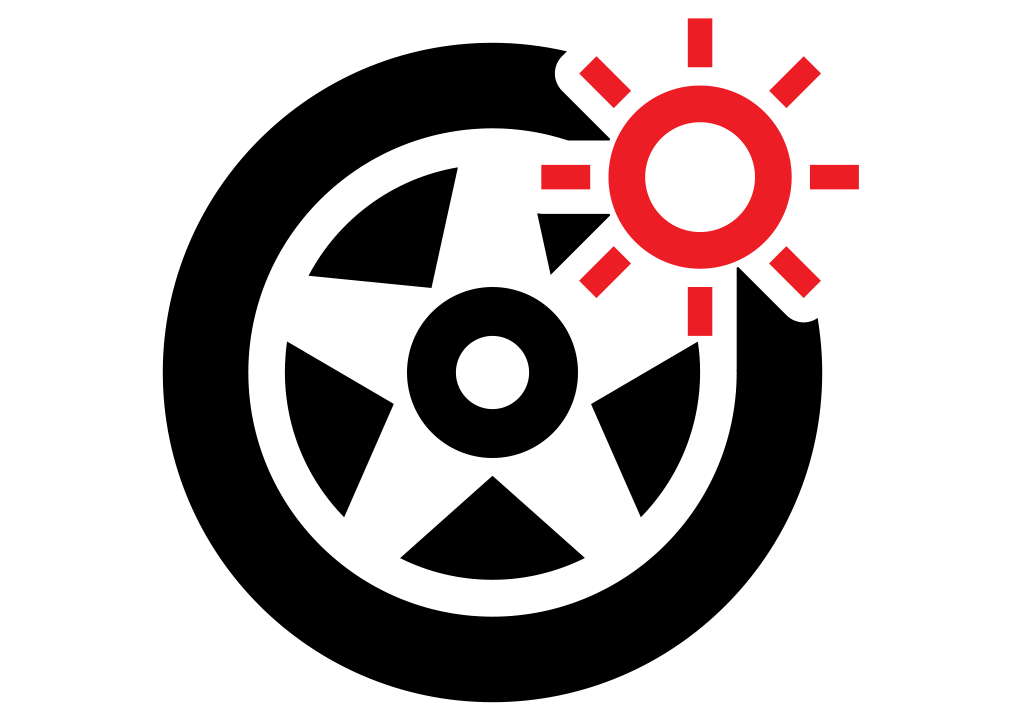
It is said that temperatures hardly rise during spring: Off with the winter tyres and on with the summer tyres. And every few years you need to buy them again. But is the beginning of the warm season also the best time to buy new summer tyres?
Changing summer tyres: The advantages
Summer: The best time of year for many. This is particularly true for drivers. Whether in a convertible or a sports car, driving enthusiasts get their money’s worth in the sunshine. Suitable summer tyres are a must for enjoyable driving. For most, changing tyres is a routine procedure. Summer tyres are generally recommended as soon as the temperatures is steadily above seven degrees Celsius. The tried and tested "E-to-O" rule (Easter to October) is considered a suitable benchmark.
Incidentally: Unlike winter tyres, there is no legal obligation to have summer tyres. However, even without regulations in place, is it highly recommended to change to summer tyres. After all, winter tyres don't brake as well on dry roads. The special rubber compound of summer tyres, on the other hand, is optimally tailored to the warm season. The difference is not only noticeable in the braking capabilities. Summer tyres are also superior when it comes to the level of driving comfort, gripping corners and petrol consumption. And there are even more differences between summer and winter tyres.

Buying summer tyres: The best time

When Easter is just around the corner, many drivers notice that their tyres have worn out from the previous season. By that time, they end up having to pay the retail price for summer tyres. Others make sure to replace their tyres early and hope to get a deal as a result.
Average tyre life
Having to buy new summer tyres depends first and foremost on the condition of your previous model. The decisive factor is the number of miles driven. Although there is no definitive mileage to go off, up to 50,000 kilometres is the standard for summer tyres. In addition, individual driving style, air pressure and the storage of your tyres are essential factors that can contribute to the wear of your tyres. Take special care by: Driving with caution, keeping an eye on the right air pressure and keeping your tyres cool and dry; this way, you can improve your mileage.
Instead of the distance travelled in miles, the age in years is often given as a reference for the tyre conditions. An indication which, however, does not allow any general conclusions to be drawn. After all, not all motorists drive in the same way. Therefore, 50,000 kilometres can be reached after only five or ten years. Those who want to know the tyre production date, however, can do so with a glance at the flank. This is noted in the form of the DOT number. For example, the code number "0518", means that the tyres were produced in the 5th calendar week of 2018.
Summer tire tread depth: The quality feature
It makes more sense to regularly check the tread depth of your summer tyres than to consider maximum mileage. This is where wear and tear is best detected. The legal minimum tread depth is 1.6 mm. This is not enough for experts in renowned car clubs. They recommend a minimum tread depth of three millimetres. An opinion we also share. This ensures increased driving safety – especially with aquaplaning. Here, the properties of tyres with decreasing tread depth are noticeably reduced. To ensure safe traction, the water must be absorbed and discharged in the tread. Every millimetre less means this ability is impaired. So, check the tread depth of your summer tyres from time to time – at the latest, before changing tyres in spring. Incidentally: New tyres generally have a tread depth of around eight millimetres.
In addition to the tread pattern, the carcass also provides valuable information about possible damage. It forms the central framework of the tyre and therefore ensures stability and safety. If you notice cracks or dents on the outer walls, you should act and buy new summer tyres. A large selection is available from Uniroyal. Our tyres offer optimal grip and high protection against aquaplaning, as well as low rolling resistance for more fuel efficiency.
Related Topics
-
 2023/03/31If you swap between summer and winter tyres, you have to consider where you will store the unused set in the months when they’re out of action.Storing tyresRead more
2023/03/31If you swap between summer and winter tyres, you have to consider where you will store the unused set in the months when they’re out of action.Storing tyresRead more -
 2023/03/31We would always recommend getting your tyre changed by a professional Uniroyal dealer but, if you’re determined to change a tyre yourself, it’s important you know how do it safely.How to change a tyreRead more
2023/03/31We would always recommend getting your tyre changed by a professional Uniroyal dealer but, if you’re determined to change a tyre yourself, it’s important you know how do it safely.How to change a tyreRead more -
 2023/03/31There are several reasons why you might need to change your tyres. Maybe it’s that time of year when you need to swap from winter tyres to summer tyres – or the other way round.Replacing tyresRead more
2023/03/31There are several reasons why you might need to change your tyres. Maybe it’s that time of year when you need to swap from winter tyres to summer tyres – or the other way round.Replacing tyresRead more